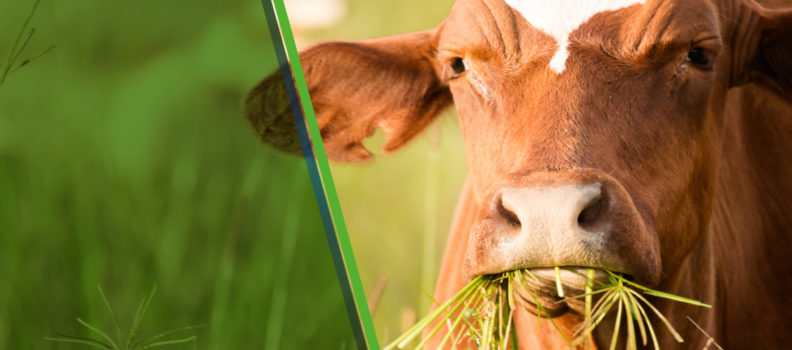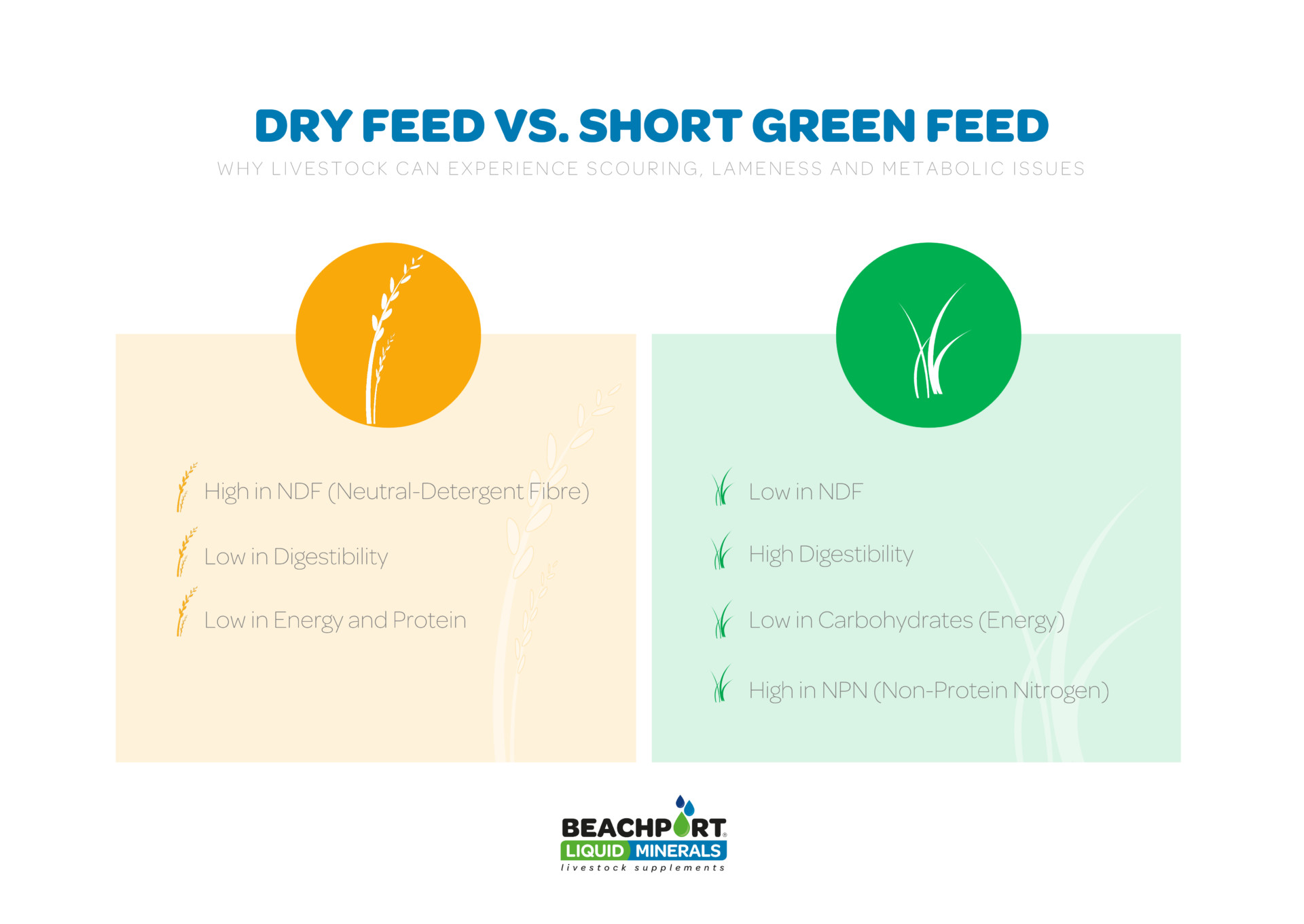Transition From Dry Feed to Fresh Green Pick

My Pa used to say when the Galahs start talking, rain is on the way. It may be an old farmers’ tale but last week we noticed a familiar sort of chatting, one we hadn’t heard in a while… This week, on our farm, it rained… But I know we are among the lucky ones.
We will begin to see a fresh ‘green pick’ for livestock soon, after the germination of pastures and crops following the recent widespread rain across many dry and drought affected areas in Australia.
Exciting as this is, the rain would’ve washed the goodness out of the remaining dry feed and managing livestock out of dry times can be difficult. Especially when more animal health and nutrition problems can present when grazing green feed, compared to dry conditions.
In dry times it can be difficult to provide stock with adequate energy and protein to meet their daily requirements and it’s no different with short green feed.
Have you ever experienced scouring, lameness, and metabolic issues?… If you have, here’s why…
Transitioning from Dry Feed; high in NDF with low digestibility, onto Green Feed; low in NDF, high digestibility and high NPN means the green feed is rapidly fermentable and increases the rate that feed passes through the rumen. This usually leads to scouring, lameness and metabolic issues.
High Non-Protein Nitrogen (NPN) means the feed has not matured and does not contain ‘true plant protein’. The protein available to livestock is in the form of Nitrogen such as urea, nitrates, and ammonia that microbes convert to protein in the rumen. High levels of NPN in plants reduces the absorption of Magnesium in the rumen, leading to metabolic issues such as hypocalcaemia, hypomagnesaemia and grass tetany.
The rumen contains billions of microflora that aid in digesting all types of feed, however, most species of microbes have different roles in the rumen. It takes approximately 2 weeks for a ruminant to adapt to a feed change… Why? because the species of microflora in the rumen need to alter to the changing feed. If the transition is too quick onto fresh, green feed you may experience animal health issues.
Animal Health Issues seen throughout these transition phases are;
- Scouring
- Lameness
- Nitrate Poisoning
- Hypocalcaemia
- Hypomagneseamia / Grass Tetany
- Worm Infestation
- Pulpy Kidney
The Transition
It’s important for livestock to be up to date with pulpy kidney vaccinations. The bacteria that causes pulpy kidney can be found in small numbers in the gut of healthy sheep and cattle, even if they’ve been vaccinated. A significant feed change or increased intake of feed can cause the bacteria to proliferate and increase toxin production. There are usually no warning signs, and the sudden death of livestock is the first sign of pulpy kidney. Give a booster vaccination 14 days before transitioning livestock onto green feed. If they’re unvaccinated follow the 4-6 week protocol from Zoetis to ensure vaccinations are administered correctly.
Avoid giving hungry livestock access to the fresh, green feed, doing this can cause them to gorge themselves, most likely resulting in the animal health issues listed above. If animals are being fed daily rations, feed them at their usual time and once they’ve consumed the supplementary feed; release them onto the fresh, green feed. This can help to reduce gorging as much as possible. Continuing to supplementary feed livestock for a short time on the green feed will further enhance feed conversion through this transition phase.
Magnesium (Mg)
The unbalanced green feed contains high levels of potassium and non-protein nitrogen which reduces the absorption of Mg in the rumen. It’s important to avoid supplements high in salt and potassium because it further restricts the animal’s ability to absorb Mg. This is a critical time for Autumn lambing and calving and livestock shouldn’t be restricted by these compounds in the feed which work against Mg absorption. Sub-clinically affected animals may not die, though there are production losses to consider when animals suffer from an Mg deficiency.
Mg is essential for muscle function, the most significant muscles include the heart, uterus, and rumen. Consequently, if these are not working efficiently it can lead to reduced appetite, poor feed conversion, heart failure, and increased birthing difficulties. Mg plays a significant role in Calcium (Ca) mobilisation from bones, predisposing animals to Hypocalcaemia or Milk Fever. Inadequate levels of Mg and Ca in the animal reduces milk production and negatively affects progeny survival and growth rates.
**Check out our blog around Grass Tetany.
How can Beachport help with the feed transition?
Beachport’s products are a 3 in 1 liquid supplement derived from seagrass and kelp containing naturally occurring amino acids, fulvic acid and chelated major and trace elements. Fulvic acid is a natural electrolyte that improves absorption, availability, and retention of the nutrients of our product in livestock. Beachport’s products improve the availability of nutrients in feed, enhancing the conversion of dry and green feed for livestock. For best results in transitioning to a different feed, we recommend applying your preferred Beachport product the week leading up to the introduction of the new feed. This ensures the benefits of Beachport will be fully absorbed in the animal and your stock can hit the ground running.
Recommendations
In Northern Australia or areas with a known Phosphorus deficiency use White Cap (also available as a part of the Organic Range) for the change in the season.
Already using BLM? Continue to utilise your preferred product such as White Cap, Blue Cap or Black Cap to help with the change in the season.
Autumn Calving or Lambing? And chasing extra Mg? Consider using High Mag.
Not sure “What Cap for That?” Please click here. Or for more information and to discuss the best product for your situation, please get in touch with our Head Office.
Please click the links below for further information:
– White Cap // White Cap Organic
– Blue Cap
– Black Cap
– High Mag
– Find your nearest stockist
Helpful Resources
Drought Feeding And Management Of Beef Cattle A Guide For Farmers And Land Managers 2018

